In 1947, this Administration Building was renamed in honor of Edgar Odell Lovett, the first president of Rice Institute (now University). Lovett had commissioned the Boston firm of Cram, Goodhue & Ferguson to design a master plan as well as all the major buildings of the new Rice Institute, founded in 1909. The firm's credentials included other collegiate buildings--at Princeton University and the US Military Academy at West Point.The west facade facing the Quadrangle--closing off the eastern end of the Quad |
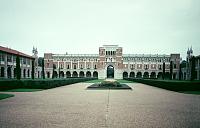
|
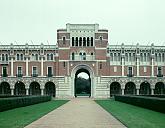
|
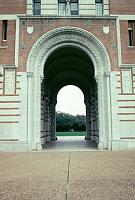
|
| |
|
| Although the stylistic sources are eclectic, in general the style of this long and narrow building (about 300 by 50 feet)is Mediterranean with Romanesque, Byzantine, and Moorish elements. Inventive striping and patterning in stone and brick set the style for the rest of the campus, which even recent buildings allude to. Pink granite, polychrome marbles, rose-hued brick, and colored tiles give textural interest. Relief carvings on the facade include Texas lone stars in the arches (see center and right images below) and female figures, identified as Science and Art, designed by sculptor C. Percival Dietsch and carved by Oswald J. Lassig, an Austrian-American stone-carver. (See center image below.)Three marble reliefs, spaced between the French doors on the second floor (or piano nobile of the south wing, depict Letters, Science, and Art with their representatives: Homer, Newton, and Leonardo da Vinci. |
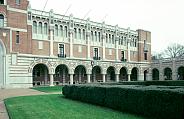
|
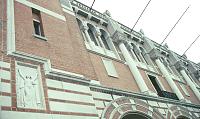
|
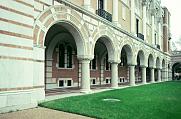 |
| |
|
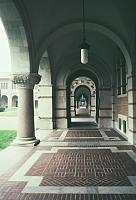
|
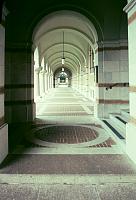
|
The west facade is more horizontal than the east with the cloister-like loggias providing shelter from the elements. The columns are of Llano granite and the paving is brick and marble. |
| |
|
| The capitals, carved by Oswald J. Lassig, have various themes. Some have portrait faces representing famous Europeans; some are figural with serpents and intertwined birds; some relate to college themes depicting a bookworm, cheerleader and football player. |
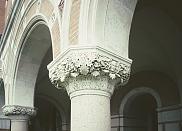
|
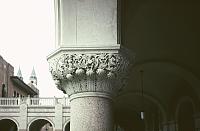 |
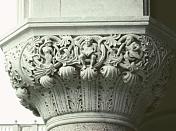 |
| |
|
The east facadeWhereas the west facade stresses horizontality, the east seems more vertical with arched, double-height loggias off the piano nobile. Although the facades appear to be symmetrical, some details are asymmetric. Note, for example the narrow arched windows on the third floor flanking the arch--one has a grilled screen. On the west facade, the narrow slit windows on the second floor flanking the arch are set at different heights and the south and north wings have totally different fenestration. |
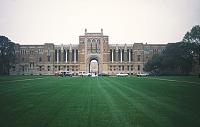
|
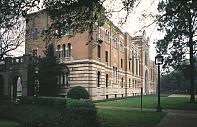
|
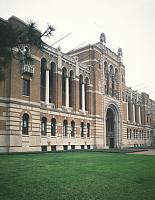
|
| |
|
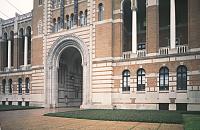
|
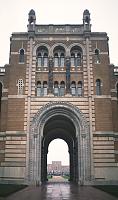
|
The sallyportThe arched portal, or sallyport, (a military architectural term) frames a view of the library, which closes off the west end of the quadrangle. It also serves as a dramatic gateway to the academic community. The office for the president is in the fourth floor of this central tower. |


 Go to the index of works on the Rice University campus.
Go to the index of works on the Rice University campus. Click here to return to index of art historical sites.
Click here to return to index of art historical sites.
 Click here to return to index of artists and architects.
Click here to return to index of artists and architects.
 Click here to return to chronological index.
Click here to return to chronological index.
 Click here to see the home page of Bluffton College.
Click here to see the home page of Bluffton College.
